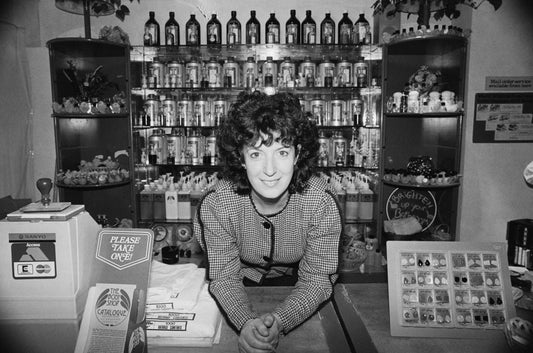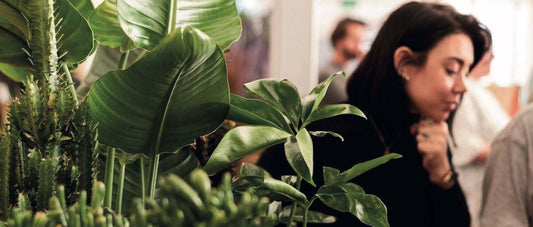@florenceceramics // www.florenceceramics.co.uk
Ceramics - otherwise known as pottery - is one of the most ancient craft practices, with a history spanning thousands of years. After humans discovered that clay could be found in abundance on almost every continent, and when fired formed a solid object, a landmark in the history of humankind had begun. If you can make a solid object out of clay, you can make anything out of clay: bowls, cups, vases, sculptures, bridges, houses. The almost limitless potential of the material can sometimes feel slightly overwhelming.
To counteract this feeling of overwhelm as a potter, it can be grounding to consider and take inspiration from the long and varied history of ceramics, which can be used to track and record the history of humankind. Amphoras from Greece, intricate prayer bowls from Iran, clay pipes washed into the mudflats on the river Thames. Quite astonishingly, the oldest clay artefact we currently have is a small statuette of a woman which has been dated to 28,000 BCE, during the late Paleolithic period.
Sadly, we don’t house any Paleolithic objects in Prior (yet), however the ceramicists that we do stock - and the work their tradition represents - can be seen to be carrying on the history of this truly ancient craft into the present day.
Broadly within the craft there is a split between the two disciplines of ‘functional’ or ‘sculptural’ pottery. The former is the creation of items that - funnily enough - serve a function. Most of these functions in the present day are surrounding the consumption of food: bowls, plates, mugs and cups. The later category is more concerned with the purely artistic pursuit of form within clay - sculptures; artistic works.
Despite this split between disciplines, the steps needed to be undertaken remain broadly the same. The potter - a term used to describe an artist or craftsperson who works with clay, must first begin with a single raw material:
Clay
Clay itself is merely a fine-grained soil material, that when sourced from different geographical areas, can contain a number of different mineral compounds which in turn affect the final colour and texture of the fired product. These can range from a pure, delicate white, to creams, browns, reds and blacks. The artist potter must make a decision at this stage as to which raw material to settle upon. This choice will hugely affect not only the look of the final product, but also the texture, weight, and aesthetic sense of the item.
Throwing versus handbuilding
The potter, once they have chosen their raw material (known as the clay body, which is a delightfully haptic turn of phrase), must then specialise in one or two (or both) methods of creating their object. Handbuilding refers to the way in which a potter may use their hands, or hand-tools, to build a structure. Throwing refers to the creation of a pot (normally spherical, due to centrifugal force), on the potter’s wheel, a quickly turning circular-headed machine which allows the potter to quickly create symmetrical items.
The art of handbuilding and the art of throwing can take years to master, especially considering that in Japan, the home of great ceramic works, apprentice potters are commonly found still learning from the masters well into their 60s and 70s. Despite the differences between the disciplines, they share many similarities too in their dedication to fine-tuning the art of touch, of spatial awareness and of tactile ability. Although many potters refer to themselves as artists, the phrase ‘craftsperson’ often feels to be more fitting - ceramics is such an undeniably practical skill that a comparison to carpentry or metalwork wouldn’t go amiss.
After the potter has either built, or thrown their object, it must be left to dry to become brittle for between 2-5 days, before an initial firing in a kiln to between 900-1100 degrees. After this firing the structure of the material has changed, and where it was once soft and pliable, it is now hard, brittle, and a perfect surface for decoration. This type of pottery is known as ‘bisque’ or ‘biscuit’.
Glazing
Glaze, a substance which fuses to the clay body, is applied in liquid form. To create a glaze, many minerals and chemicals are combined with something known as a ‘flux’, a compound used to lower the total temperature, to allow glass - or silica - to form as a thin layer above the ceramic. The application of glaze onto an item therefore - as if by magic - applies a very very thin coating of coloured glass onto the surface of the object, rendering it food-safe.
The variation in compounds used within the glaze creates different effects upon the eventual colour and texture of the piece. Glazes can range hugely, from clear to cloudy, bright to calming, crackled, craterous, or shiny.
Once the glaze has been applied, the pots are once again piled into the kiln and fired to around 1200-1290 degrees: each minute change in degree can have a colossal effect on the outcome of the pot. Plans, dreams, hopes, have all been made or broken in the kiln - an undeniably fussy and tempestuous piece of machinery. Many potters joke about sending prayers to the ‘kiln gods’ once a firing has been set - and many may keep good luck charms or kiln guardians - little figurines that keep watch over the application of the heat - in an attempt to control the uncontrollable.
The choice of glaze - just as much as the choice of clay body - can have similarly huge effects as to the eventual aesthetic and practical outcome of the piece. Potters spend an inordinate amount of time studying glaze science, tweaking, perfecting, and honing not just their glaze recipes, but their application, firing, and layering of glazes. There is nothing worse than spending so long throwing, firing and applying glaze to only discover that whatever you’ve created turns out to be monstrous.
Ceramics as a craft for the modern day
One of the most ancient crafts still ignites an unquenchable passion in so many people. Perhaps it maintains its allure because it is a historic industry, or perhaps it is because people find it grounding, or perhaps it is because it is such a practical skill. Yet I tend to believe it is because there are fewer things more magical than making something beautiful out of what is - simply - mud.
Written by Florence Williams - @florenceceramics




1 comment
What a lovely, light hearted, yet informative bit of writing Flo! Love it!